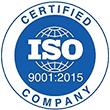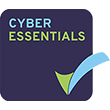Rethinking Disaster Recovery: Why Cyber Resilience Matters and How MSPs Can Help

Cyber threats are rapidly becoming the headlines across all businesses, regardless of their size. What was good as a disaster recovery plan to start with, is no longer effective as cyber attacks have evolved in nature and complexity, requiring organizations to be proactive instead of reactive. In such a scenario, cyber resilience becomes a crucial strategy for businesses. It involves not just preparing for an attack but fostering an adaptable and robust operational framework that ensures business continuity. Cyber resilience is essentially an immune system for enterprises that enables them to withstand and recover from cyber incidents effectively. Ready to learn why now is the time to rethink your disaster recovery strategy? Let’s dive into what makes cyber resilience so essential and how MSPs can make the transition smoother than you think. What Is Cyber Resilience? Preparedness, response, and the ability to recover from disruptive cyberattacks against any organization are key components of cyber resilience. It is an integration strategy. And unlike classic disaster recovery, its idea is to decrease the risk of attack occurrences to a large extent. During the attack event, it helps reduce the scale of an impact. Why Cyber Resilience Matters Today’s businesses ought to operate in an environment rife with sophisticated cyber threats, from ransomware and phishing attacks to vulnerabilities in the supply chain. Data breaches and downtime can be a disaster of financial and reputational magnitude: Cyber resilience addresses these issues by promoting an active, layered defensive posture. It ensures businesses are not reactive to threats but capable of holding out against them. The Role of Managed Service Providers (MSPs) The fact is, with organizations pushing toward better cyber resilience, the role of MSPs is becoming pretty critical. As cyber threats grow in sophistication, so do the service portfolios of the MSPs, not only augmenting security but ensuring business continuity and compliance too. Key Services Offered by MSPs are: Threat Monitoring MSPs continuously monitor their IT infrastructures for emerging threats and vulnerabilities, which enables them to act promptly when risks are found. This proactive approach helps organizations stay ahead of cyber adversaries and minimizes the potential damage from such attacks. Incident Response MSPs bear the responsibility of the recovery from cyber attacks. They will work with the business to find out how the breach occurred, how the damage done could be repaired, and how to prevent the next attacks. All these are crucial to recover in the shortest time possible to ensure minimum downtime and operational disruption. Security Awareness Training Training programs, therefore, need to be holistic and address common threats like phishing. MSPs train employees regularly so that they can recognize and respond to cyber threats effectively. Backup and Disaster Recovery Solutions MSPs possess strong backup strategies, which give them the capacity to very quickly restore data in such cases as ransomware attacks in order to maintain business continuity and protect important data. Regulatory Compliance Support Organizations struggle because of the complexity of their regulatory environments. This can work to the advantage of the MSPs as they ensure the client is aligned with GDPR or HIPAA, avoid penalties, and keep data safe. Vulnerability scans and security auditing Regular assessments help identify gaps in security measures, allowing organizations to strengthen their defenses proactively. MSPs conduct audits to ensure that cybersecurity practices remain effective against evolving threats. By partnering with MSPs, organizations gain access to advanced technologies and expertise without the need for significant upfront investments. How MSPs Enhance Cyber Resilience In return, MSPs provide various contributions toward cyber resilience: Key Elements of a Cyber Resilient Strategy Cyber resilience requires a multi-faceted approach. The following are the key components: 1. Proactive Threat Mitigation Anticipation and preparing to handle threats once they strike will form the foundation for cyber resilience: 2. Advanced Technology Utilization Modern technology is of extreme importance in defense against the present cyber threats. The technologies involved are: 3. Strategic Backup Solutions Backups are a key protection measure against data loss and ransomware attacks. Successful backup strategies include: Aligning Cyber Resilience with Business Goals Cyber resilience has gone beyond being named purely as a technology area and has become a fundamental necessity to ensure effective business delivery. The role of cyber resilience within these critical areas is discussed below: 1. Business Continuity Keeping operations running smoothly is non-negotiable when disruptions happen—whether from a cyberattack or another unexpected event. That’s where the cyber resilience role comes in. A company could continue providing its service even in cyber events by applying the proper measures. An effective cyber resilience strategy also guarantees a rapid recovery, thereby diminishing downtime and lessening the repercussions on routine operations. 2. Regulatory compliance Cyber laws and regulations are increasingly stringent, and cyber resilience will help organizations to comply with these demands. It’s not about checking boxes but defending what matters: 3. Safeguarding Your Reputation The company’s reputation might take years to build, but it can take only a few moments to get destroyed. Cyber resilience can be pivotal in maintaining such hard-won trust. An adequately prepared business will recover faster from cyber incidents, reducing the losses in terms of finance and reputation. When customers see that a company can recover quickly after attacks, they will more likely stick to that company. Effective communication and culture also play a key role. Providing clear and transparent updates regarding cybersecurity initiatives significantly contributes to the preservation of trust. Additionally, timely updates also ensure that employees understand and prioritize security in the organization, indicating to stakeholders that the organization takes its responsibilities seriously. Cyber Threats aren’t Going Anywhere They’re only getting more sophisticated. Moving from traditional disaster recovery to a more proactive cyber resilience strategy isn’t just a good idea—it’s an absolute necessity. When prioritizing resilience, you’re not just protecting your business from interruptions. You’re also safeguarding your reputation, maintaining customer trust, and setting yourself up for long-term success. Partnering with Managed Service Providers makes this journey a whole lot easier. They bring the expertise, advanced tools, and 24/7 support to tackle today’s complex
The Importance of Cyber Tabletop Exercises

The state of cybersecurity keeps worsening: increased cyberattacks, evolving threats, rising stress, swollen budgets, and most of all, the lack of readiness. Numbers don’t lie: The statistics are endless, and alarming. Since most businesses focus on basics like strong passwords, firewalls, MFA, etc. and neglect updating incident response plans and cyber response training, cybercriminals succeed in executing sophisticated attacks by exploiting human and system vulnerabilities. It’s high time you implement proactive cybersecurity measures to protect your organization’s critical systems and data. That’s where a cyber tabletop exercise – a simulated cyberattack for training – emerges as a valuable tool. It enables you to refine your IRPs, enhance cross-functional collaboration, improve incident preparedness, and promote a security-first culture. Keep reading to learn what it is, how it can benefit your business, and the basics of conducting the simulation for your organization. Plus, a surprise awaits you at the end. What are Cyber Tabletop Exercises? How They Help You Reinforce Cybersecurity A tabletop exercise (TTX) is a realistic simulation of a cyberattack primarily used to test and refine IRPs and incident playbooks by deliberately finding weaknesses to improve over them. Cybersecurity training methods like penetration testing, red team-blue team exercises, threat hunting, and live-fire exercises revolve around technical aspects and could disrupt operations. In contrast, a TTX is a safe, collaborative activity focused on assessing the readiness of key personnel and C-suite executives, resulting in strengthening their incident response skills. It involves a realistic attack scenario played over a fixed timeline wherein teams discuss and decide how they would act when a cyberattack occurs. Throughout the activity, facilitators evaluate participants’ discussions and actions. Post-exercise, they provide recommendations to improve their IRPs, cross-team communication, and decision-making skills. Benefits of Cyber Tabletop Exercises The TTX offers multiple short-term benefits for your organization as follows: Identifying Gaps in IRPs Implementing a TTX enables you to test the response plan safely, allowing you to identify and bridge security gaps and poorly defined responsibilities in your IRPs/playbooks. Enhancing Cross-functional Collaboration Effective cybersecurity management requires breaking down communication silos to promote collaboration between teams. TTXs lets you test how teams collaborate in real time, uncovering and resolving communication issues. Improving Response Times Running a TTX enables your teams to get habituated to crisis-like situations, giving them the confidence to make effective decisions quickly during a real attack. Increasing Employee Awareness TTX raises cyber threat awareness among all attendees, leading to a more security-conscious culture. Also, a cyber drill provides several benefits in the long run for organizations of all sizes and types: Ensuring Business Continuity and Resilience Cyberattacks often jeopardize business continuity for days, if not weeks or months. Continuously improving IRPs and security protocols ensures minimal disruption to business operations. Plus, it enhances your organization’s ability to recover from cyberattacks. Improving Brand Reputation Effective incident response strategies, developed through regular TTXs, enable you to protect your brand’s image by improving your organization’s overall cybersecurity posture. A quick incident response allows you to minimize negative publicity and maintain customer trust. Continued Stakeholder Support Conducting TTXs shows your commitment to improving IRPs. It builds confidence among your customers, partners, and investors, resulting in lasting relationships with them. Implementing an Effective Cyber Tabletop Exercise Planning Stages Execution Stages Introducing the Ebook: “How to Run a Successful Cyber Tabletop Exercise” And now is the time for the surprise we promised: Master the ins and outs of a TTX with our free eBook titled “How to Run a Successful Cyber Tabletop Exercise” Implement a successful cyber tabletop drill, tailored to your organization’s risk landscape, with our comprehensive eBook that you can download for free. Here’s what the eBook contains: Don’t leave your company’s digital and financial assets to chance. Develop proactive strategies to fortify your digital empire and build a security-focused culture across your organization. Download the eBook today to learn in-depth how to implement successful TTXs at your organization.
The Risks of Offshore Cybersecurity Services and How to Avoid

Today, businesses of all sizes rely heavily on technology and the Internet to operate efficiently. While this connectivity and reliance on technology have unlocked new opportunities, they have also introduced substantial cybersecurity risks that threaten operations and data security. To address these challenges, many turn to outsourcing some or all of their cybersecurity needs. Offshore outsourcing in particular is an attractive option due to relatively lower costs. However, relying on offshore cybersecurity services also introduces unique risks that companies must carefully consider and mitigate. This article discusses some of the most common risks of outsourcing cybersecurity offshore and provides actionable recommendations to help businesses maximize the benefits of outsourcing securely. Loss of Control and Visibility One of the primary risks of outsourcing cybersecurity functions offshore is the loss of direct control and visibility over operations. When critical security functions are managed remotely, oversight and accountability become more challenging. Service providers based in different countries operate within different legal and regulatory environments, making direct supervision difficult. Moreover, when networks and assets are managed across international boundaries, maintaining complete visibility into asset and user behavior becomes nearly impossible. Unknown communication channels or improperly segmented access between client environments and service provider networks can enable unauthorized access. These gaps in visibility and control increase the likelihood of security failures or incidents going unnoticed. To mitigate such risks, companies must establish robust governance, risk, and compliance (GRC) programs with their offshore providers. Comprehensive service level agreements (SLAs) defining deliverables, access controls, validation mechanisms, and response procedures are critical. Regular audits conducted by independent assessors help validate adherence to agreed security baselines. Multi-factor authentication for all remote access and network segregation practices that isolate provider environments also improve oversight. Strict configuration management covering any network or system changes is another best practice. Differences in the Regulatory Environment Regulations defining data protection, privacy, and security best practices vary widely between jurisdictions. When service providers operate from regions with less stringent rules, they may not voluntarily adhere to the same standards expected within a client’s home country. Failure to consider these differences can result in non-compliance, fines, or even loss of intellectual property. To address this challenge, agreements must explicitly require adherence to the client’s local regulatory requirements for any data or systems involved. Providers also need systems and processes in place to demonstrate compliance through audits and assessments. Industry certifications like ISO 27001 can help validate adequate security practices independently of geographic location. Additionally, contractual controls over data flows and stipulated response procedures for any breaches strengthen risk management across borders. People and Culture Risks The nature of risks associated with people becomes more complex in offshore outsourcing. When employee screening, background checks, and ongoing monitoring are governed by different labor laws, vulnerabilities may arise. Cultural differences also influence aspects like work priorities, communication practices, and levels of transparency, each introducing human factors and risks. Mitigating such risks involves building trusted partnerships with service providers through open communication and cultural awareness. Comprehensive screening and periodic re-validation of employee credentials help ensure role-based access controls are not compromised. Implementing control practices like separation of duties and regular auditing of privileged access provide additional checks. Security awareness training tailored for cultural sensitivities can also establish a shared security mindset. Contractual non-poaching agreements further reduce risks from staff attrition. Unencrypted Data Exchange When data is transmitted between client and service provider networks without encryption, it is exposed to interception by malicious cyber actors. Transmitting customer credentials, financial information, health records or other sensitive unencrypted data between offshore locations opens up the risk of theft or exposure. To prevent this, all data exchanges with offshore partners must be done over encrypted channels using technologies like SSL/TLS, IPsec or proprietary encryption protocols. Data in transit should never be sent in plain text formats like email attachments. Proper identity and access management protocols should also govern who can access what data within service provider environments. Continuous Monitoring is Critical With cybersecurity functions outsourced offshore, vulnerabilities introduced during system and change management become harder to detect quickly through routine oversight. Due to gaps in visibility, attack surfaces may also expand unintentionally. Without robust monitoring controls, security issues may persist unnoticed, worsening impacts. To address this challenge, comprehensive security incident and event monitoring (SIEM) and log management systems must be implemented across all environments under management. Automated vulnerability scanning and external penetration testing help detect weaknesses. User access should require multi-factor authentication to applications and network segments, with all activity securely logged. 24/7 security operations center (SOC) coverage strengthened by professionally managed detection and response (MDR) services greatly enhances threat detection capabilities. Compliance is a Shared Responsibility When service providers operate from environments with less developed data privacy, security, or compliance standards, client obligations remain. Offshore outsourcing does not absolve companies of accountability for sensitive data under their purview, requiring diligent oversight. Ensuring contract terms explicitly outline each party’s compliance responsibilities helps manage this risk. Baseline compliance requirements and validation mechanisms should also be clearly established through independent assessments, regulatory audits by qualified auditors, and records retention policies agreed in SLAs. Adopting certifications like ISO 27001 showcases provider reliability and facilitates audits. Internal compliance teams must still audit offshore partners periodically to verify and validate controls. Security Begins with the Right Partner With cyber-attacks threatening organizations of every size, a strong security posture is indispensable for business continuity, customer trust, and competitive advantage. While offshore outsourcing enables cost optimization, security best practices demand a tailored approach to suit an organization’s budget, risk tolerance, and changing requirements. For these reasons, partnering with an experienced managed security services provider (MSSP) is critical. Cyber Security specialists like IMS Nucleii offer end-to-end security solutions and managed services designed to secure systems and defend against modern threats. With 24/7 security monitoring, experienced security analysts using AI/ML backed tools have deep expertise to detect threats faster. Penetration testing, vulnerability assessments, and compliance audits help identify gaps, while regular employee training builds security awareness. With local presence and global delivery
Understanding the Business Impact of Data Loss

“Data is synonymous with modern businesses.” Most businessmen or businesswomen would agree with this statement because every element of a modern organization, be it marketing or strategies – is data-driven. However, this crucial element can cause a business’s downfall, too. A data breach alone can change the sentiments of not just users but the company’s investors. You may think it isn’t concerning. If you look at the number of data breaches in the first quarter of 2023, which was 6.41 million, you may reconsider your notion. Additionally, a breach is not the only form of data loss; destruction, deletion, and corruption are equally responsible. Destruction and deletion can be intentional and unintentional. Some organizations delete & destroy unuseful data, but in other cases, hackers do it. On the contrary, corruption occurs when data becomes unusable due to storage, transfer, or processing errors. Whether the data loss is due to technical failure, human error, or malicious attacks, it can halt operations and cause financial losses. Therefore, the life & death of your business depends on understanding the causes, impacts, and prevention methods thoroughly. The Inevitability and Causes of Data Loss Companies like Yahoo, Equifax, Facebook, LinkedIn, and various other big names have lost their data due to security breaches in the past. Mostly, there only a few reasons behind a data loss, such as: Economic and Operational Impacts of Data Loss Losing business data is not something you can quickly get over with. These losses have profound implications, such as: Strategies for Prevention and Management As per Security Magazine, about 25 percent of respondents rated their companies as “poor” or “fair” regarding the ability to detect and block threats. Follow these prevention methods if you don’t want to be among this percentage. Long-Term Consequences and Recovery For small and medium businesses, long-term consequences can be shut down if data is not recovered. Meanwhile, the giant whales, like Yahoo, get over it, but with a blot on their brand image for a lifetime. Protection Is Always A Smart Choice! This article serves as a reminder that not every business can survive the severe consequences of a data breach. It is necessary to reevaluate your data protection measures at every step and to Ask yourself – Are you doing enough to secure your and your user’s data? If not, then it is never too late to take the right step. For in-depth insights on best data protection practices, explore IMS Nucleii’s whitepapers – “Security Patching Made Simple: A Guide for Busy Businesses” and “The Future of Cybersecurity: Trends and Predictions for the Next Decade.”
How MDR Shapes Modern Defense Strategies

Managed Detection and Response (MDR) has emerged as а pivotal strategy in bolstering organizational cybersecurity postures. MDR involves outsourcing detection and response capabilities to security experts through а managed service model. It marries automation with human intelligence to proactively identify, analyze and address threats across an enterprise’s digital infrastructure. As attacks evolve in complexity and scale due to the rising exploitation of artificial intelligence, machine learning and work-from-home trends accelerated by the pandemic, adapting defensive measures through MDR has become imperative. Traditional security approaches mostly rely on preventative controls like firewalls, antivirus, and intrusion prevention systems (IPS). While such controls form the foundation, modern threats circumvent them with advanced evasion techniques. MDR transcends the limitations of conventional point solutions through comprehensive monitoring, early detection of known and unknown threats, and rapid containment of active incidents. This article analyzes how MDR has emerged as the preferred strategy to reshape cyber defenses aligned with evolving adversarial TTPs (tactics, techniques and procedures). The Imperative for MDR Since the onset of digital transformation, cyber risks have multiplied manifold with multiple entry points and vast attack surfaces. Simultaneously, threat actors have scaled operations leveraging underground markets for malware, open-source intrusion frameworks and outsourced labor. Ransomware, for instance, has burgeoned into а multi-billion-dollar criminal economy through RaaS (Ransomware-as-a-Service) affiliates readily weaponizing advanced evasion techniques and exploit kits. Traditional security approaches relying on preventative controls alone have grown insufficient against such sophisticated, multi-staged campaigns. While managed security service providers (MSSPs) offer outsourced monitoring and management, their reaction times remain high due to reliance on rules-based detection. MSSPs also lack the predictive capabilities and human oversight required to proactively identify unknown threats indicating advanced persistent attacks (APT). The dynamic, hybrid workforce model further exacerbates risks with personal and IoT devices directly interacting with business-critical systems. Work from home has made traditional perimeter-based defenses defunct by eradicating network boundaries. These shifts necessitate а proactive, enterprise-wide perspective for early detection of internal compromises and supply chain infiltrations before damage. MDR addresses such limitations through its predictive, holistic methodology. Core Components of MDR Services MDR leverages cutting-edge technologies, exploits and human security expertise to continuously hunt for known and unknown threats across clients’ IT environments. At the core of MDR operations are: Operational Advantages of MDR MDR substantially enhances organizations’ level of visibility and security posture through its predictive, enterprise-wide methodology. Some key operational benefits include: Strategic Benefits of Adopting MDR Adopting а managed MDR service conveys multifaceted strategic benefits that strengthen overall security postures and maximize risk management. MDR Vs. Other Security Solutions While MDR rises as the preferred strategic shift, it succeeds with legacy and complementary solutions versus replacing them. Below are some contrasts: Choosing the Right MDR Provider With MDR emerging the go-to strategy, selecting the right provider undergirds optimizing its security value proposition. Key considerations include: An ideal choice is IMS Nuclei – а leader in proactive defense against both known and unknown threats. IMS Nuclei’s team of experts and industry veterans, specialized in delivering unparalleled detection expertise through customized MDR, backed by а proprietary AI/ML-powered platform. Their integration, scalability, compliance and communications support make them the top MDR partner for optimizing cyber risk postures amid disruptive changes. Conclusion As businesses go digital and the threat landscape evolves, robust defense strategies must evolve correspondingly. MDR has emerged as the optimal model aligning prevention, early detection and efficient response capabilities with proliferating, sophisticated cyber adversaries. By outsourcing predictive security to dedicated, expert-augmented MDR services like IMS Nuclei that continuously learn evolving TTPs.
The State of Backup and Disaster Recovery in 2024
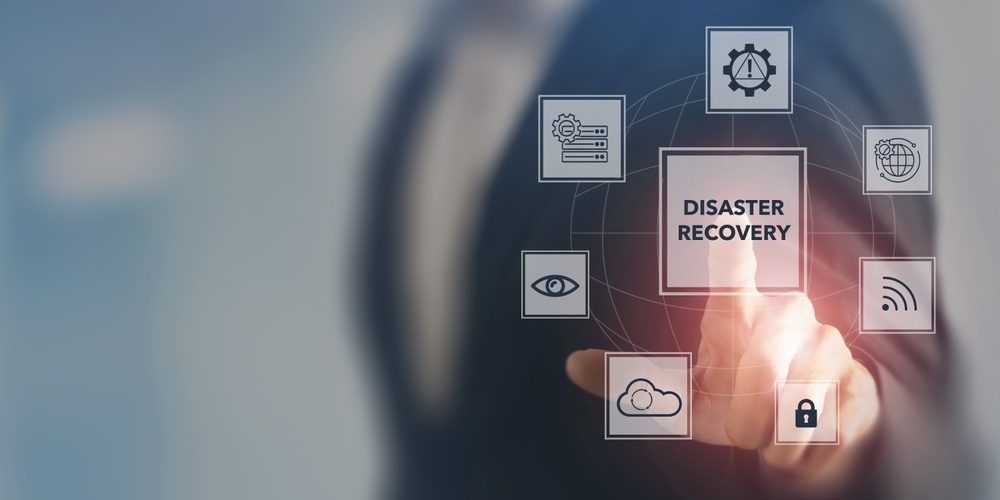
Evolving technology also means evolved digital threats, and naturally, businesses today grapple with an increasingly complex threat landscape for their data. With cybercriminals and other disruptive forces growing more sophisticated, ensuring effective data protection and disaster recovery has never been more important. Recent data reveals а troubling reality: 79% of companies have experienced at least one cloud data breach, and 43% have faced 10 or more breaches. Furthermore, 76% of organizations have experienced critical data loss, with 45% losing their data permanently. Despite the growing adoption of cloud solutions—92% of organizations are currently hosting some data in the cloud—traditional backup practices often fall short. Only 57% of backups are successful, and 61% of restores meet the desired outcome. This article examines the latest statistics and market research to outline where organizations stand today in these crucial areas. A Troubling Rise in Security Incidents and Data Loss Recent surveys indicate а troubling increase in security incidents and data loss. According to the 2024 State of the Backup survey, approximately 78% of companies use up to 10 different solutions for data security, yet cyberattacks and downtime persist. Hackers targeted backup repositories in 93% of ransomware incidents in 2022, raising concerns about the effectiveness of current protective measures. Preparedness is also lacking. Only 54% of companies had а documented disaster recovery plan in 2021, and many test their plans infrequently. 7% of organizations conduct no testing at all, which leads to inadequately documented processes and increased risk. Ransomware Remains the Gravest Threat Ransomware continues to be а significant threat. The 2024 State of Ransomware report highlights that а business was attacked every 11 seconds in 2023. Total ransom payments exceeded $20 billion USD. Despite paying ransoms, 60% of victims reported incomplete data recovery or further system breaches. The average ransom payment exceeded $150,000, yet victims typically recover only about 60% of their data. Backup Effectiveness Lags Behind Traditional backups often fall short. A survey of 300 IT decision-makers revealed that only 56% of recoveries using backups were successful. 84% of organizations rely on cloud drives, and 70% use sync services, which are not true backups. This insufficiency means that many businesses struggle to protect and recover their data effectively. Human Error Remains а Core Vulnerability Human mistakes are а significant factor in data loss. Analysts report that 51% of outages are due to preventable human errors. Inadequate disaster recovery documentation and poor security practices exacerbate these issues. Comprehensive training and regular testing can mitigate these risks. Proper Planning and Testing Is Critical Proper planning and testing of disaster recovery capabilities are essential. The 2024 Business Backup Survey found that 73% of organizations paid ransoms in 2023 but only recovered 60% of their data. Organizations with frequent disruptions face costs up to 16 times higher than more resilient firms. Proper documentation and frequent testing can help avoid these costly disruptions. Common Data Protection Fallacies Many companies rely on misguided approaches. The 2024 Business Backup Survey found that 84% of companies primarily use cloud sync services for offsite backups, which do not qualify as true backups. Furthermore, hackers targeted backup repositories in 93% of ransomware attacks in 2022. Selecting а proper mix of solutions is crucial for effective data protection. Additional research reveals concerning trends: The Risks of Cloud Failures and Downtime The widespread adoption of cloud infrastructure introduces new risks. IDC predicts that by 2030, half of global GDP will be digitized and stored in the cloud. However, cloud outages pose severe risks, with major providers suffering over 500 hours of downtime in 2022. Businesses must prepare for cloud-based incidents with the same diligence as other threats. Critical Gaps in Data Backup Practices A 2024 Business Backup Survey included 300 IT decision-makers across the U.S. One of the most striking findings is that 84% of IT decision-makers report their organizations utilize cloud drive services, which rely on syncing data to the cloud, for off-site data backup. Cloud drives, while useful for file storage and sharing, may not protect against file corruption or accidental deletion. 39% of IT decision-makers report that their organizations need to restore data from backups at least once а month. Top reasons include requests for archived or deleted data (62%), backup software failure (54%), hard drive failure (52%), and accidental file deletions (45%). Frequency of Cloud Data Breaches Causes of Data Loss Account Takeover and Ransomware Hard Drive Failure and Service Outages Natural Disasters Backup and Recovery Practices Cost and Effectiveness of Backups Market Trends Managed Services Providers: A Crucial Partner Faced with such widespread weaknesses and growing dangers, it is clear that disaster recovery and data protection demand renewed attention. For most firms, achieving robust, thoroughly tested solutions can be an arduous undertaking—but one with major impacts on resilience and the bottom line. This is where managed security services providers (MSSPs) play an indispensable role. MSSPs specialize in delivering managed backup, disaster recovery and cybersecurity capabilities through expert guidance, oversight of technologies and processes, and ongoing maintenance. With 22% of SaaS data loss attributed to service outages and 76% of organizations experiencing critical data loss, the role of MSSPs becomes increasingly vital. ATSG’s Disaster Recovery as а Service (DRaaS) offering is powered by а best-in-class global infrastructure, with deep security and compliance skills. This enables even resource-constrained firms to institute enterprise-grade protections with minimal long-term costs or administrative burdens. Looking Ahead The threats to organizations’ data show no signs of abating. The cost of data breaches remains high, with the average breach cost at $3.86 million USD, and 59% of ransomware incidents involve data in the public cloud. However, with greater awareness of deficiencies as highlighted by the statistics above, as well as intelligent partnerships with capable MSSPs, businesses stand to emerge far better defended. Continued diligence applying lessons from the latest research, coupled with offloading routine security tasks, provides а scientifically-proven path for strengthening protections today and driving resiliency goals of the future.
Ransomware Roundup: Top Threats and Trends of 2024

As we leave behind the first half of 2024, the relentless rise of sophisticated ransomware attacks remains a persistent cybersecurity trend. Despite intensified law enforcement efforts and major crackdowns, the ransomware epidemic not only prevails but also evolves. According to the Verizon Security Report 2023, ransomware was implicated in 24% of all cybersecurity breaches last year, a trend that continues to escalate into 2024. A recent study by Thales reveals that ransomware and malware are seen as the fastest-growing cyber threats this year. About 42% of respondents identified them as the top concern. This rapid rise is clearly noticeable through an alarming spike in ransomware activity in May, where ransomware groups claimed nearly 450 victims. This is the highest level of activity in almost a year. A major hotspot for ransomware attacks, Europe experiences the highest number of attacks globally, constituting about 26% of all incidents. Despite significant disruptions, including the seizure of the LockBit group’s website by authorities, this notorious group and others like it continue to operate and contribute to the continued evolution of ransomware threats. As we move towards the second half of 2024, this article aims to explore the top ransomware threats, the industries most at risk, emerging trends, and what the future may hold. The ongoing development of new ransomware strains continues to challenge the digital world’s preparedness, making it imperative to stay informed and vigilant. Victims of Ransomware Attacks in 2024 So Far These attacks highlight the growing sophistication and aggressiveness of ransomware attacks in 2024 and emphasise the need for proactive measures to protect against them. Each targeted sector exhibits unique vulnerabilities that attackers exploit for maximum impact. Attacks on Critical Infrastructure In 2024, ransomware attackers continue to focus heavily on critical infrastructure, with significant disruptions noted across various sectors. For instance, In January 2024, Russian hackers initiated a ransomware attack on Sweden’s only digital service provider for government services. Healthcare Sector Healthcare remains a prime target for ransomware attacks, representing 16.32% of all cyber incidents. The sector’s reliance on immediate data access makes it particularly vulnerable to ransomware. Cybersecurity attacks can lead to severe disruptions in patient care and potential risks to patient safety. Group Health Cooperative of South Central Wisconsin (GHC-SCW) reported a network breach by a ransomware gang in April 2024. The attackers stole documents containing personal and medical information of over 500,000 individuals. State Institutions and Political Systems State institutions encountered over 450 incidents in 2023, making them the second most common target. In March 2024, Russian hackers tried to infiltrate German political parties through concealed ransomware in a fake dinner invitation. These attacks are often politically motivated, aimed at espionage, or destabilising governmental functions. Education The education sector faces continuous threats due to its expansive and typically underfunded IT infrastructures. The most recent attack affected Canada’s largest school board, which manages 582 schools and about 235,000 students. In June 2024, Hackers tried to attack the Toronto District School Board’s (TDSB) technology testing environment with ransomware. Schools and universities are particularly susceptible to attacks, disrupting educational operations and data integrity. Corporate Targets Corporate entities experienced a notable increase in ransomware attacks, with significant incidents reported in both 2023 and 2024. Attackers are drawn to these businesses’ valuable data and substantial financial assets, leveraging ransomware for financial gain and corporate espionage. April 2024 – A ransomware attack on GBI Genios has disrupted operations and caused a multi-day outage. The incident has impacted the critical WISO database used by universities and libraries throughout Germany. Financial Organizations Financial organisations managing sensitive financial data accounted for 8.3% of attacks. The high value of financial information makes this sector a lucrative target for cybercriminals seeking ransom payments or direct financial exploitation. A recent attack by the CL0P ransomware group has exposed severe vulnerabilities, leading to substantial leaks of personally identifiable information (PII) from customers, including a significant Social Security data breach at a U.S. bank. Emerging Sectors New targets have emerged, including the telecommunications, transportation, and energy sectors, each seeing a surge in incidents due to their roles in national infrastructure. January 2024—The Kansas City Area Transportation Authority (KCATA) reported a ransomware attack affecting all communication systems. The attackers demanded $2,000,000 and offered a $100,000/day extension to delay publishing stolen data. Emerging Trends in Ransomware Attacks Briefly discuss each of the ransomware trends mostly likely to affect organisations in 2024: Form a Resilient Digital Core with IMS Nucleii The first half of 2024 has made it clear that bad actors will continue to leverage ransomware to disrupt critical sectors and compromise sensitive data. At IMS Nucleii, we understand the complexities of these threats and are dedicated to providing advanced cybersecurity solutions that safeguard your operations. Today, staying informed about the latest cybersecurity trends, forming meaningful partnerships, and employing adaptive strategies are more crucial than ever. We invite you to download our whitepaper, “The Future of Cybersecurity: Trends and Predictions for the Next Decade,” to explore the future of cybersecurity and how to stay ahead of emerging threats. Stay vigilant, stay safe, and let us help you secure your digital landscape.
Key Cybersecurity Statistics for 2024
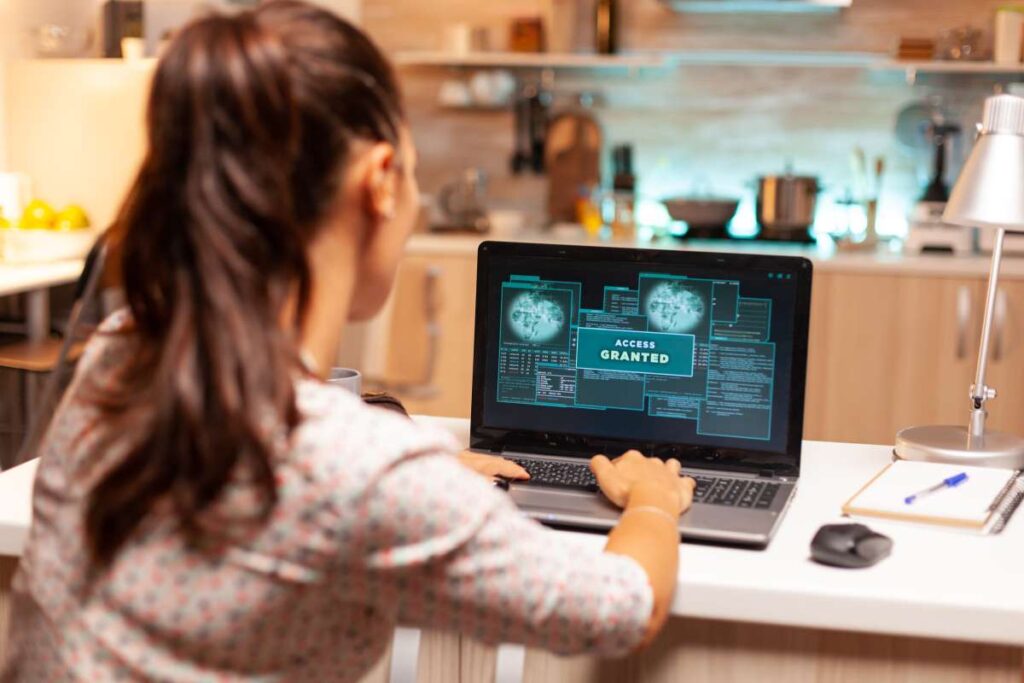
The world is facing increasingly sophisticated cybersecurity challenges, and the UK is no exception. Today, three-quarters of businesses and more than half of charities in the UK cite cyber security as a high priority for their senior management. This sentiment was also echoed at the World Economic Forum’s annual meeting on Cybersecurity, where 90% of the 120 executives surveyed acknowledged the immediate need for action to combat the rising tide of cyber inequity. At IMS Nucleii, we understand the unique challenges faced by UK businesses. Rather than viewing these challenges as obstacles, we see them as opportunities for growth and transformation. We have carefully compiled a list of the most pertinent cybersecurity threats facing UK business leaders today. This guide contains the information that UK businesses need to make their cybersecurity efforts and IT investments count. UK Cybersecurity Overview for 2024 The Cyber Security Breaches Survey, conducted as part of the UK’s National Cyber Strategy, evaluates cyber resilience across various sectors. Here are the key takeaways from this study. Incidence of Cybersecurity Breaches/Attacks: Types of Breaches/Attacks: Cost of Cybersecurity Breaches/Attacks: UK Cybersecurity Prioritisation in 2024 Trend Analysis in Business Prioritisation Cybersecurity is increasingly recognised as a critical priority among businesses of all sizes. The following statistics compare the prioritisation in 2024 to those in 2023, underscoring the growing awareness and proactive measures being taken. Sector-Specific Cybersecurity Prioritisation: Different sectors vary in their perception of cybersecurity urgency. The data highlights sectors that regard cybersecurity as a particularly high priority: Adoption of Cyber Hygiene Measures in 2024: Businesses and charities have increased their implementation of cyber hygiene measures to protect against common threats. The adoption rates for 2024 reflect an upward trend compared to the previous year: Sector-Specific Cybersecurity Statistics Financial Sector Healthcare Manufacturing SMBs Real Estate Emerging Cybersecurity Threats for 2024 AI-powered Attacks: Cybercriminals are increasingly leveraging artificial intelligence to automate tasks, personalise attacks, and bypass traditional security measures. These AI-powered attacks can be highly sophisticated and difficult to detect. Cloud Security: Cloud migration offers numerous benefits for businesses, but it also introduces new security risks. Misconfigurations, data breaches within cloud providers, and insider threats can all compromise sensitive information stored in the cloud. Skills Shortage in Cybersecurity: The demand for skilled cybersecurity professionals is rapidly outpacing the supply. This shortage makes organisations more vulnerable to attacks, as they may not have the resources to properly defend themselves. Strengthening UK Business Resilience with Expert Cybersecurity Partnerships Similar to global trends, the UK’s digital ecosystem is facing a wave of increasingly complex cybersecurity threats. For businesses, this negatively impacts their operational integrity and economic stability. Since proactive cybersecurity measures have become the norm, sector-specific cybersecurity strategies are also needed. For industries like finance, healthcare, and manufacturing, a “one size fits all” approach will soon become obsolete. Additionally, the skill shortages in the domain highlight an urgent need for training and better recruitment strategies. In this environment, strategic partnerships with experienced cybersecurity providers like IMS Nucleii are invaluable. IMS Nucleii delivers expert-managed cybersecurity services that are meticulously tailored to each business’s specific needs. We ensure robust defence strategies that not only protect against current threats but also help you prepare for future challenges. By letting us handle your cybersecurity concerns, UK businesses can fortify their defences, bridge skill gaps, and move ahead with confidence. Don’t miss out on this opportunity to prepare for the future. Gain deeper insights into protecting your business by exploring our whitepaper, “The Future of Cybersecurity: Trends and Predictions for the Next Decade.“
Zero Trust Architecture for Healthcare: Mitigating Insider Threats and Data Breaches
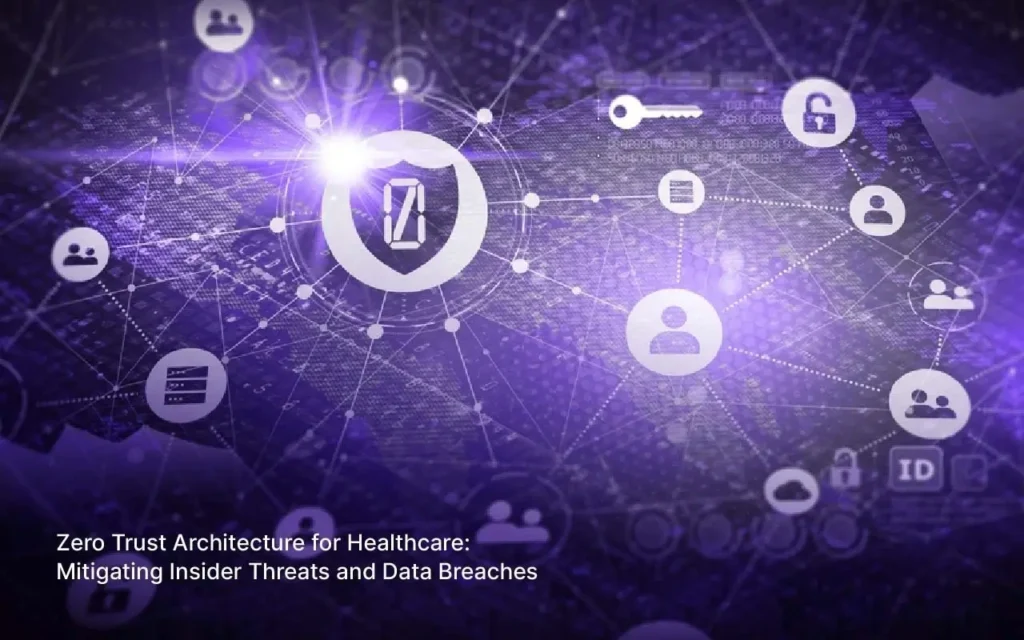
Data breaches are rising, hitting 32% of all businesses and 69% of large firms in the UK. Also, did you know the NHS reported over 3,500 data breaches in just two years? In the healthcare sector, where safeguarding sensitive patient information is of utmost importance, this calls for urgent action. This is where Zero Trust Architecture (ZTA) emerges as the robust solution, trusting no one and verifying all to defend valuable patient data. Let’s dig deeper into how Zero Trust Architecture is reshaping data security in healthcare. What is Zero Trust Architecture? Zero Trust Architecture is a security framework that doesn’t automatically trust anything inside or outside its network. Instead, it verifies every attempt to connect to its system before granting access. It upholds three core principles: never trust, always verify, and least privilege access control. In simpler terms, it doesn’t blindly trust any user or device. Instead, it constantly verifies them and provides only the minimum access essential for particular tasks. Benefits of Adoption of Zero Trust Architecture in Healthcare Reduced attack surface Zero Trust Architecture reduces the risk associated with data breaches by minimising the “blast radius”—the impact of a breach if one occurs. Even if an unauthorised user somehow breaches the system, the damage stays limited because of ZTA’s principle of least privilege access control. Continuous monitoring Zero Trust Architecture continuously checks user identity, device health, and access requests. This thorough vetting doesn’t just happen once. It’s a continuous, rigorous process to prevent unauthorised access. Whether it’s 2 pm or 2 am, Zero trust architecture always works to ensure data is safe. Improved compliance Zero Trust Architecture aligns well with HIPAA compliance requirements. Healthcare organisations often grapple with maintaining HIPAA’s stringent norms, and adopting ZTA can make it easier. Compliance with HIPAA is now more of a certainty rather than a challenge. Insider Threats in Healthcare When we think of healthcare, we often think that it’s all about caring for people. But there’s another side to the coin. Sometimes, dangers to people’s private data come from within healthcare organisations. These are what we call ‘insider threats’, and they cause waves in the healthcare industry. Eye-opening incidents and figures Data breach at NHS In February 2023, a National Health Service (NHS) Trust in Liverpool, England, confronted a significant data security incident. Due to an inadvertent disclosure, the personal details of approximately 14,000 staff members were compromised. This event triggered a data breach, posing serious risks for employees and the trust. OCR breach reports Turning our attention to the US, we’re looking at a pattern that’s becoming all too familiar. In 2023, the story was about 725 breach notices landing on the Office for Civil Rights’ desk. The consequence: personal data of over 133 million individuals was exposed or improperly shared. Common types of insider threats in healthcare Disgruntled employees Sometimes, the internal team causes problems. Disgruntled employees might intentionally misuse data due to dissatisfaction or personal vendettas. Implementing a Zero Trust Architecture ensures that even these insiders are never automatically trusted, significantly reducing such risks. Every action they try to perform is meticulously verified. Accidental data sharing Mistakes do happen. An email sent to the wrong person or a document left open can lead to massive data exposure. A Zero Trust Architecture comes into play by requiring strict data access protocols. This minimises the odds of accidental sharing by enforcing layers of verification for every data access or transfer. Credential theft Identity theft poses a significant threat. Unauthorised access through stolen credentials can expose sensitive data. With Zero Trust Architecture, every login attempt is thoroughly vetted, and access is never assumed to be legitimate. This model greatly diminishes the risk of credential theft impacting the system. How Zero Trust Architecture Mitigates Insider Threats The importance of Zero Trust Architecture in cybersecurity has increased dramatically. Its principles premise heavily on the fact that no user, internal or external, is to be automatically trusted. This approach enhances security through several crucial mechanisms. Least privilege access The core idea of Zero Trust Architecture revolves around confining user access to what one needs for one’s work. Limited access prevents unnecessary exposure and possible theft of data. If an account gets compromised, the damage an attacker could inflict is considerably reduced owing to limited access. Multi-factor authentication (MFA) Multi-factor authentication (MFA) adds an additional layer of security. Even if an employee’s credentials get compromised, unauthorised access is still blocked. MFA involves multiple verification steps, such as a temporary code sent to the user’s phone. It makes unauthorised access increasingly difficult, thus safeguarding against credential theft. User and device monitoring It is essential to track user activities and device health constantly. In Zero Trust Architecture, every action on the network undergoes thorough scrutiny for any anomaly. Such monitoring tactics can help detect suspicious behaviours like unusual access patterns or early attempts to access restricted data. Data loss prevention (DLP) When combined with Zero Trust Architecture, data loss prevention tools offer another level of security. For example, DLP solutions can help monitor and control data transfers. Thus preventing unauthorised information leakage. It ensures that even if an insider attempts to exfiltrate data, such actions can be quickly flagged and investigated. Implementing Zero Trust Architecture in Healthcare Challenges in Implementing Zero Trust Architecture Legacy Systems Many healthcare IT systems in the UK use old technology. These systems came before the idea of Zero Trust, so they might not work with it. Updating these systems for Zero Trust can take a lot of time, money, and effort. Integration Issues Healthcare organisations in the UK use many different apps and devices, each with its own way of keeping data safe. It is complex to ensure that all these different parts can work together under Zero Trust. Making a common, organisation-wide security rule takes time and technical understanding. Best Practices for Implementing Zero Trust Architecture Security assessment Carry out a complete security analysis to spot potential risk areas. Understanding weak points can guide the effective implementation of Zero
Safeguarding Your Data: A Closer Look at Encryption
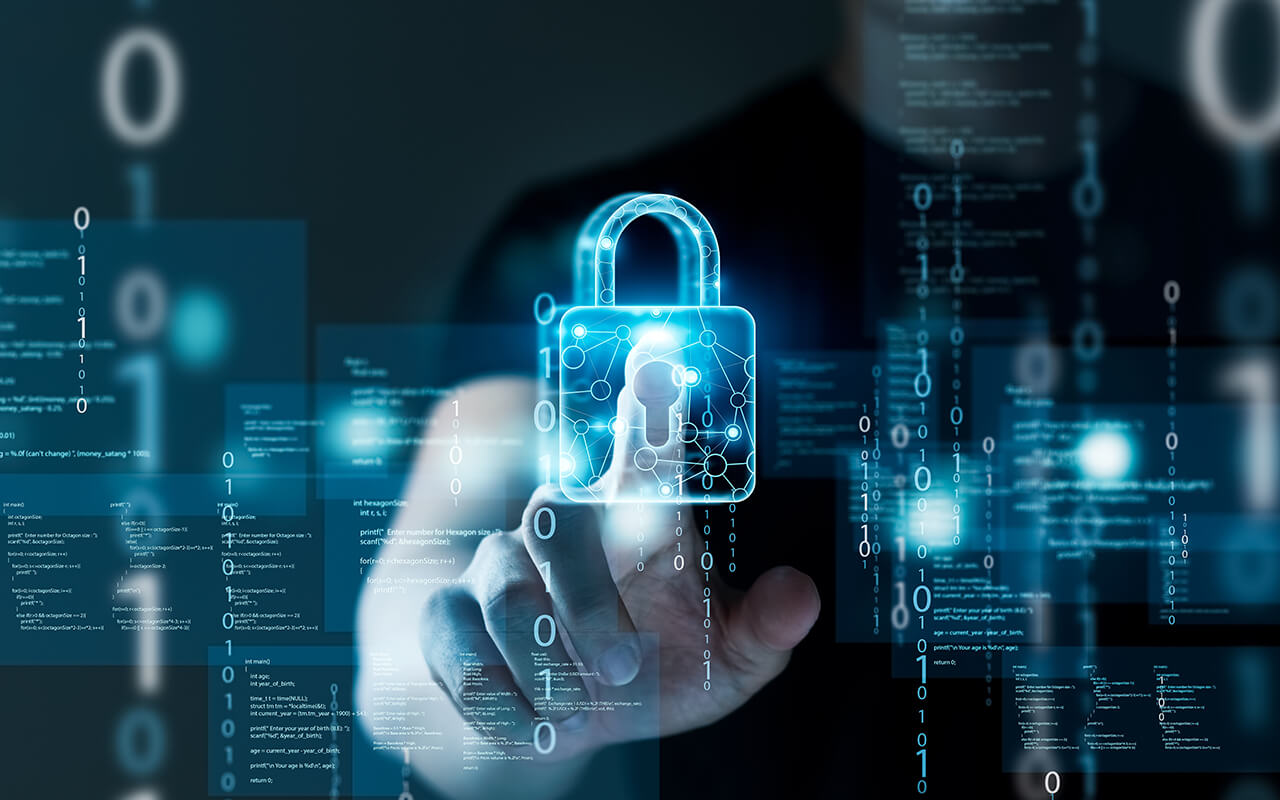
In today’s digitally driven world, where information is exchanged at the speed of light, the security of our data has become paramount.
Firewalls: Safeguarding Your Business from Cyber Threats

Discover how firewalls protect businesses from cyber threats with IMS Nucleii. Essential insights for robust digital security.
Unveiling the Art of Cryptography: Securing Your Digital Realm

In today’s rapidly evolving digital landscape, ensuring the security and privacy of sensitive information is of paramount importance.
Understanding Malware-as-a-Service
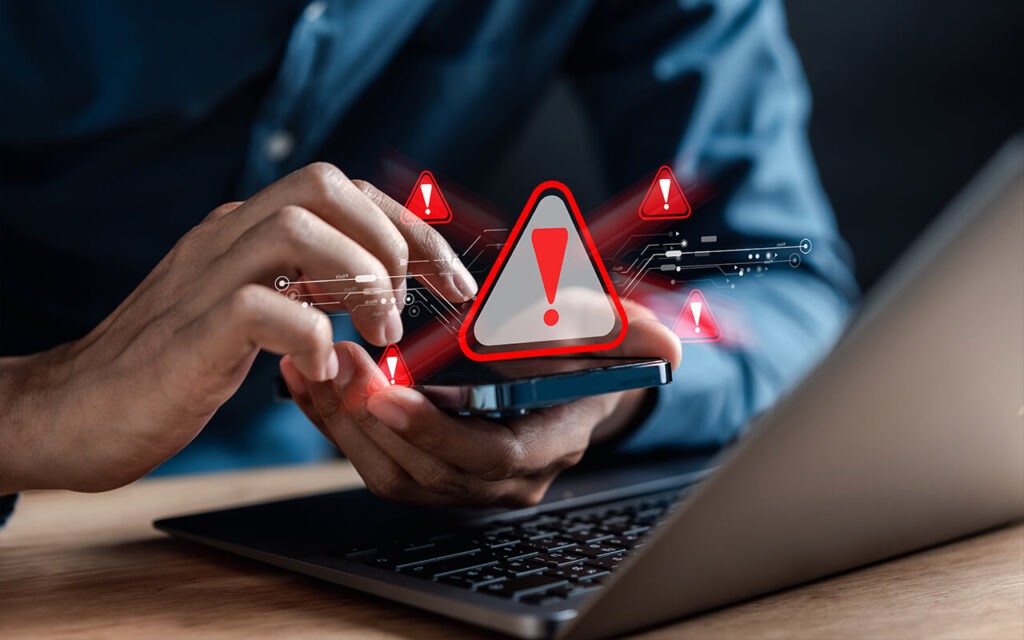
Explore Malware as a Service with IMS Nucleii. Get insights into this cyber threat and learn how to protect your digital assets.
